Book Review – Man Friday: The Second Half (The Life and Times of Robin Friday. Book 2) by Stuart Kane
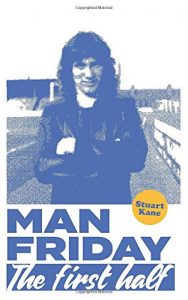 This is the second part of Stuart Kane’s work on the ex-Reading and Cardiff City player Robin Friday. The first book was reviewed by FBR back in September 2020 and can be found here.
This is the second part of Stuart Kane’s work on the ex-Reading and Cardiff City player Robin Friday. The first book was reviewed by FBR back in September 2020 and can be found here.
Kane starts this second-half, picking up from the end of the first instalment in the summer of 1976, with Reading having been promoted from the Fourth Division and awaiting the new season and life in the Third Division. It sees the players including Robin Friday in dispute with the club over pay. However, he starts the season at Elm Park, before a transfer to then Second Division Cardiff City in December 1976, where he sees out the 1976/77 campaign but then makes only two league appearances the following season before retiring from the professional game.
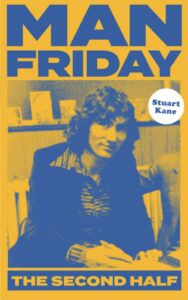 Stylistically the book continues in its biographical fiction form as Kane once more combines real-life events and fictional narrative to get inside the head of Robin Friday. However, there is a distinct difference in focus which derives from all that was happening in Friday’s life. In the first book, covering his playing career during the 1973/74, 1974/75 and 1975/76 campaigns, readers get more detail around the mercurial player and his time at Reading on the pitch. Here in the second book, over the following three seasons, Friday makes just half the number of appearances as he did in his first three years as a professional with Friday’s life off the pitch now the dominant force. The joy of playing that was evident in the first book is plainly missing here in the second as Kane conveys to the reader how drug addiction and drinking came to take over Robin’s life. Apart from his dazzling debut for Cardiff against Fulham, in which he outplays former England captain Bobby Moore, the football detailed in this second instalment feels like a struggle for Friday as he fights against a body wracked by the ruthless challenges of brutal opponents and its cravings for the next fix.
Stylistically the book continues in its biographical fiction form as Kane once more combines real-life events and fictional narrative to get inside the head of Robin Friday. However, there is a distinct difference in focus which derives from all that was happening in Friday’s life. In the first book, covering his playing career during the 1973/74, 1974/75 and 1975/76 campaigns, readers get more detail around the mercurial player and his time at Reading on the pitch. Here in the second book, over the following three seasons, Friday makes just half the number of appearances as he did in his first three years as a professional with Friday’s life off the pitch now the dominant force. The joy of playing that was evident in the first book is plainly missing here in the second as Kane conveys to the reader how drug addiction and drinking came to take over Robin’s life. Apart from his dazzling debut for Cardiff against Fulham, in which he outplays former England captain Bobby Moore, the football detailed in this second instalment feels like a struggle for Friday as he fights against a body wracked by the ruthless challenges of brutal opponents and its cravings for the next fix.
This second instalment portrays a man in turmoil, who battles with himself in terms of his demons. A lost career and the dreams of playing First Division football, the failed marriages, the ignominy of run-ins with the law, the flare-ups on and off the pitch, all leading to a sad conclusion in an early death.
That Robin Friday was a talented player there is no doubt as testified by those that managed and played with him. However, in addition, he was undoubtedly also a complicated character. Kane captures both his playing genius and his struggles, the highs on the pitch and his lows away from it with the two books reflecting that dichotomy. Kane wanted to provide a read that captured and was true to the spirit of Robin Friday. This he has done in a game of two halves, and leaves readers to imagine what might have been.
(Helpston Fuller. November 2020. Paperback 314 pages)
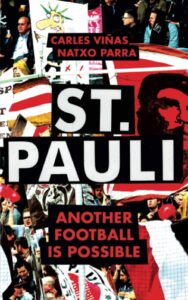

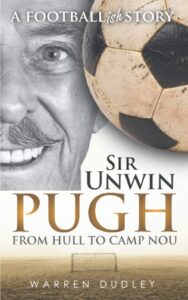 The author himself describes it as, “a comedy football autobiography about a 90 year old ex-player and raconteur called Sir Unwin Pugh. A bit Partridge, a bit Count Arthur Strong, a bit Ron Atkinson.” Traits from these three personas are presented to the reader, as Sir Unwin regals his life story against the background of an impending court case. Like Alan Partridge, Pugh is never afraid to promote his own worth and has something of the Little Englander about him, with his right-wing views evident through his story. Pugh also displays at times a pompous attitude with significant delusions about his abilities as a player and manager, and indeed his life in all aspects, features akin to the Count Arthur Strong character. In respect of Dudley’s nod to the much travelled ex-manager Ron Atkinson, Pugh comes to represent all the cliches that managers and pundits come to espouse in the game over the last few years. There are of course other influences, with this book also aiming an arrow firmly at the ‘boy-done-good’ football autobiographies.
The author himself describes it as, “a comedy football autobiography about a 90 year old ex-player and raconteur called Sir Unwin Pugh. A bit Partridge, a bit Count Arthur Strong, a bit Ron Atkinson.” Traits from these three personas are presented to the reader, as Sir Unwin regals his life story against the background of an impending court case. Like Alan Partridge, Pugh is never afraid to promote his own worth and has something of the Little Englander about him, with his right-wing views evident through his story. Pugh also displays at times a pompous attitude with significant delusions about his abilities as a player and manager, and indeed his life in all aspects, features akin to the Count Arthur Strong character. In respect of Dudley’s nod to the much travelled ex-manager Ron Atkinson, Pugh comes to represent all the cliches that managers and pundits come to espouse in the game over the last few years. There are of course other influences, with this book also aiming an arrow firmly at the ‘boy-done-good’ football autobiographies.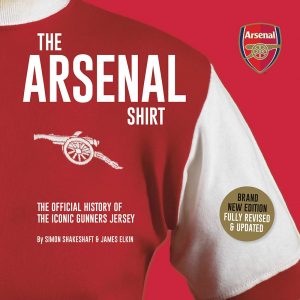 This is the second edition of this ‘coffee table book’ with the original edition released in November 2014 and titled The Arsenal Shirt: The History of the Iconic Gunners Jersey Told Through an Extraordinary Collection of Match Worn Shirts. As with then, the authors are James Elkin and Simon Shakeshaft, with much of the collection referenced in the first book seen and added to in this second edition, belonging to co-author James Elkin.
This is the second edition of this ‘coffee table book’ with the original edition released in November 2014 and titled The Arsenal Shirt: The History of the Iconic Gunners Jersey Told Through an Extraordinary Collection of Match Worn Shirts. As with then, the authors are James Elkin and Simon Shakeshaft, with much of the collection referenced in the first book seen and added to in this second edition, belonging to co-author James Elkin. Back in August 2019, Steve Bell wrote the heart-breaking yet inspiring book,
Back in August 2019, Steve Bell wrote the heart-breaking yet inspiring book,  Belper Town Football Club, nicknamed The Nailers, are a club based in Derbyshire, in a town approximately 7 miles north of Derby, who in the 2020/21 football season were plying their trade in the Northern Premier League, South/East Division (level 8 of the English Football Pyramid, where the Premier League is level 1).
Belper Town Football Club, nicknamed The Nailers, are a club based in Derbyshire, in a town approximately 7 miles north of Derby, who in the 2020/21 football season were plying their trade in the Northern Premier League, South/East Division (level 8 of the English Football Pyramid, where the Premier League is level 1).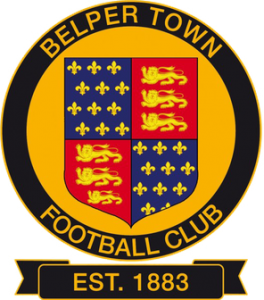 The clubs current badge (see right) states 1883 as the date of formation, Smith though in the book states, looking at various precedents I would argue that Belper Town were formed in 1878 rather than 1883. Part of this conclusion from the author is the existence of Belper St Peter’s FC (who changed their name to Belper Town FC for 1883/84 season) playing games as early as 1878.
The clubs current badge (see right) states 1883 as the date of formation, Smith though in the book states, looking at various precedents I would argue that Belper Town were formed in 1878 rather than 1883. Part of this conclusion from the author is the existence of Belper St Peter’s FC (who changed their name to Belper Town FC for 1883/84 season) playing games as early as 1878.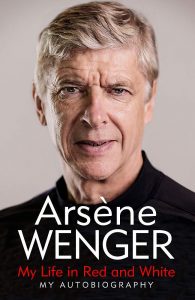 For Arsenal fans and football scholars, the release of Arsene Wenger’s first ever autobiography, My Life in Red and White, signalled a much-anticipated event, a chance to hear from the man who stamped his mark on Arsenal and the Premier League, a man who divided opinion but unquestionably brought success, a man who was notoriously private and enigmatic away from the pitch, but who wore his heart on his sleeve during matches. But those hoping for a no-holds-barred confessional, with revelations about his players, opponents and fellow managers will be disappointed. Wenger is nothing if not a principled man – as Arsenal fans will attest, either positively citing his loyalty to the club or conversely bemoaning his stubbornness to see out his contract – so it should be no real surprise that instead of a sensationalised tell-all, the autobiography is as measured, moderate and considered as the man himself, with astute observations on his own childhood and entry into football and thoughtful reflections on management and the game.
For Arsenal fans and football scholars, the release of Arsene Wenger’s first ever autobiography, My Life in Red and White, signalled a much-anticipated event, a chance to hear from the man who stamped his mark on Arsenal and the Premier League, a man who divided opinion but unquestionably brought success, a man who was notoriously private and enigmatic away from the pitch, but who wore his heart on his sleeve during matches. But those hoping for a no-holds-barred confessional, with revelations about his players, opponents and fellow managers will be disappointed. Wenger is nothing if not a principled man – as Arsenal fans will attest, either positively citing his loyalty to the club or conversely bemoaning his stubbornness to see out his contract – so it should be no real surprise that instead of a sensationalised tell-all, the autobiography is as measured, moderate and considered as the man himself, with astute observations on his own childhood and entry into football and thoughtful reflections on management and the game.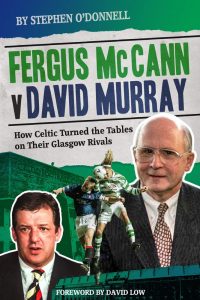 Stephen O’Donnell’s book is a thorough and powerful analysis of how the Glasgow footballing giants – Celtic and Rangers – have been managed and mismanaged. Two ex-Chairmen are the focus of the narrative and it is a damning commentary on how borrowing on a huge scale, mostly prompted by the self-promoting David Murray, was the eventual undoing of Rangers whilst Celtic found an unlikely hero in Fergus McCann. His ‘tight-ship’ budgeting proved unpopular at the time, especially when contrasted with free-spending Rangers, but ultimately proved to be the correct approach.
Stephen O’Donnell’s book is a thorough and powerful analysis of how the Glasgow footballing giants – Celtic and Rangers – have been managed and mismanaged. Two ex-Chairmen are the focus of the narrative and it is a damning commentary on how borrowing on a huge scale, mostly prompted by the self-promoting David Murray, was the eventual undoing of Rangers whilst Celtic found an unlikely hero in Fergus McCann. His ‘tight-ship’ budgeting proved unpopular at the time, especially when contrasted with free-spending Rangers, but ultimately proved to be the correct approach.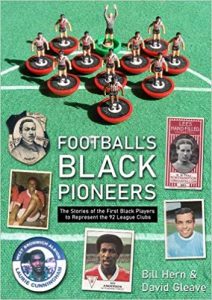 2020 will undoubtedly be remembered as the year that the world was brought to a standstill by the COVID-19 outbreak, but it also will be remembered for the Black Lives Matter campaign that also went global, sparked by the killing of George Floyd in the USA whilst being arrested by a white police officer. Given that scenario, the release of Football’s Black Pioneers: The Stories of the First Black Players to Represent the 92 League Clubs by Bill Hearn and David Gleave is timely indeed.
2020 will undoubtedly be remembered as the year that the world was brought to a standstill by the COVID-19 outbreak, but it also will be remembered for the Black Lives Matter campaign that also went global, sparked by the killing of George Floyd in the USA whilst being arrested by a white police officer. Given that scenario, the release of Football’s Black Pioneers: The Stories of the First Black Players to Represent the 92 League Clubs by Bill Hearn and David Gleave is timely indeed. Where to start? Well, the back cover of this book defines itself as “biographical fiction” so a definition of the term is as good a place as any to begin. In essence, biographical fiction is a form of writing which takes a real-life individual and combines actual events in their life with a fictional narrative in which other situations and characters are created to tell the story.
Where to start? Well, the back cover of this book defines itself as “biographical fiction” so a definition of the term is as good a place as any to begin. In essence, biographical fiction is a form of writing which takes a real-life individual and combines actual events in their life with a fictional narrative in which other situations and characters are created to tell the story.